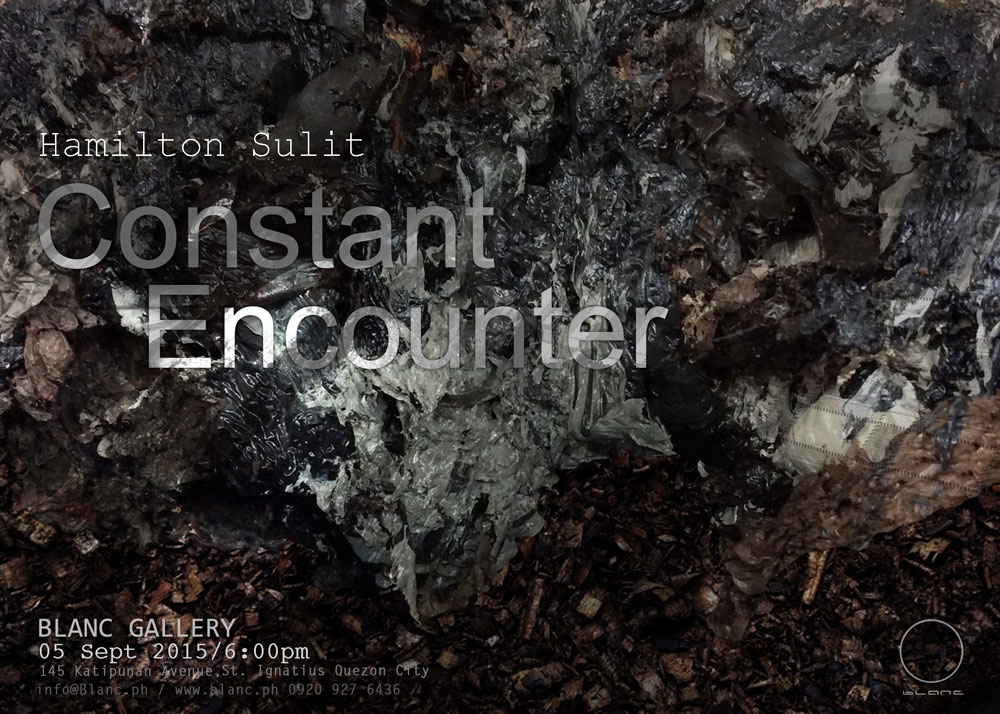
Constant Encounter
While dwelling on the same themes of suffering and death that pervade his past three shows, Hamilton Sulit uses a simpler palette of black and brown augmented by other new materials in Constant Encounter.
The works in Sulit’s fourth solo exhibit seem stripped to the barest essentials: paint, wood, and light. Each of the painted pieces features only two or three colors and mostly two main figures: boy and tree, tree and sky,
sky and crow, crow and woman, woman and boy. Despite the familiar feeling of gloom, the sense of incompleteness that hovers around each work provides a stark contrast to–and even a refreshing change from–Sulit’s elaborate, polished, fiery pieces in Dancing in the Shadow or Haunted.
Wood is used extensively, both as blank slate for image transfers and as textured layer for silhouettes of human and animal figures looming against the perennial darkness of the forest. For in Constant Encounter, each canvas is a forest unto itself, harboring various terrors much like the unconscious: getting lost alone; walking on or into graveyards; not being able to get out alive. In Sulit’s world, no matter which forest one chooses to enter, the journey is always too perilous and dire.
And yet humans with their savage nature continue to run into this horrifying space, repeatedly escaping from and into cultivated spaces like houses and cities (or, in Sulit’s case, abandoned houses and burning cities). Psychoanalysis would call it the death drive, this incessant impulse “to lead organic life back into the inert state,” referred to as “the early state of things” as well.
Ironically, this is also fulfilled
by means of vital, recurring activities like love or sex or art. In the Onion series, quite violent images of figures entwined in embrace or lost in submission are transferred onto slabs of wood. This symbol of both regeneration and decay is then perched above a seemingly scorching forest of deer horn. In The Presence of Invisibility, haunting skullified human figures–in which rotting flesh and exposed bone somehow remain intact–are treated the same before being encased in frame and glass, much like any other artwork.
Along with the aesthetics of non-paint materials, visual elements such as depth and dimension are explored more in Constant Encounter. How can the outline of human and animal figures be more defined without using paint? Why use glass to enclose this particular set of objects? How can shadows formed by red lightbulbs transform flat
canvases into dark forest paths leading to God-knows-where? That pain and death are everywhere and will outlast us, Sulit’s audience is already convinced. Against this dismal reality, the artist is able to work his theme to exhaustion by finding that aesthetic concerns prove to be more fascinating–and perhaps more critical–than any symbolic articulation, or even the actual bearing, of sorrow.
– Faye Cura
WORKS
DOCUMENTATION















